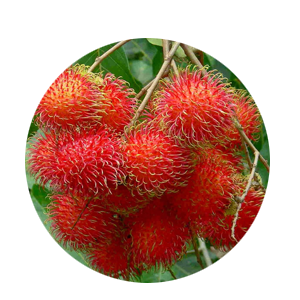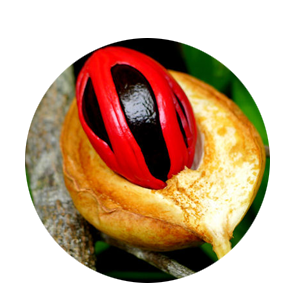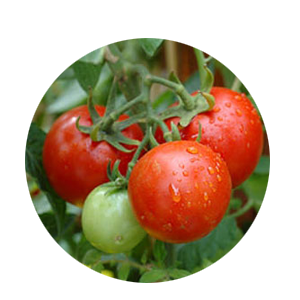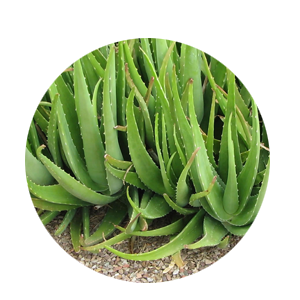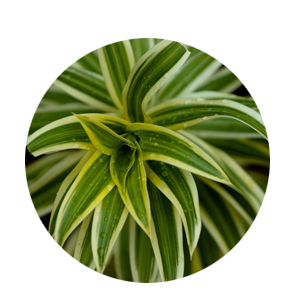Amla - Ari Nelli - Seedling - (5x7 bag)

Item Description
GENERAL INFORMATION ABOUT A STAR GOOSEBERRY Phyllanthus acidus, known as the Otaheite gooseberry, Star gooseberry, Tahitian gooseberry, country or simply gooseberry tree, is one of the trees with edible small yellow berries fruit in the Phyllanthaceae family. Despite its name, the plant does not resemble the gooseberry, except for the acidity of its fruits. It is mostly cultivated for ornamentation. The plant is an intermediary between shrubs and tree, reaching 2 to 9 m (6½ to 30 ft) high. The tree\'s dense and bushy crown is composed of thickish, tough main branches, at the end of which are clusters of deciduous, greenish, 15-to-30-cm long branchlets. The branchlets bear alternate leaves that are ovate or lanceolate in form, with short petioles and pointed ends. The leaves are 2-7.5 cm long and thin, they are green and smooth on the upperside and blue-green on the underside. In general, the Otaheite gooseberry tree very much looks like the bilimbi tree. Various parts of the plant are used for food. In India, the cooked leaves are eaten. While the fruit is eaten fresh, and is sometimes used as flavoring for other dishes, it is generally regarded as too tart to eat by itself in its natural form and is processed further.It is candied in sugar or pickled in salt, used in chutney, relish or preserves. HELTH BENENIFTS OF STAR GOOSEBERRY The plant is also used medicinally. The peppered leaves are used to make a poultice to treat sciatica, lumbago and rheumatism (but have been observed to cause low blood pressure when combined with nitrates), while the seeds are used as a cathartic and the root, if prepared with care, as a purgative.The syrup is used to medicate the stomach, and in India the fruit is eaten as a blood-enhancer for the liver. Here are some health benefits 1. Eye Care 2. Digestion 3. Diabetes 4. Calcium Absorption 5. Cancer 6. Menstrual Cramps 7. Brain health 8. Aging 9. Diarrhea and Dysentery 10. Hair care 11. Improving Appetite 12. Heart Disease 13. Diuretic Activity 14. Infection 15. Metabolic Activity
Maintanance, Disease Management And Yielding
MAINTANACE OF THE PLANTATION Once a plantation has been established, the work should not be considered finished. It will be necessary, for example, to protect the plantation against weather, fire, insects and fungi, and animals. A variety of cultural treatments also may be required to meet the purpose of the plantation. FERTILIZING The dose of manures and fertilizers depends upon soil fertility, age of plant and production. A dose of 10 kg farmyard manure, 100 g N, 50 g P and 100 g K should be given to one years old plants of amla. This dose should be increased yearly up to 10 years and thereafter a constant dose should be given. Full dose of farmyard manure and P and half of N and K should be given in tree basin during February. The remaining half should be applied in August WATERING AND WEED CONTROL Young star gooseberry should be watered regularly until fully established. In dry western climates, water mature trees deeply at least every one or two weeks. Desert gardeners may have to water more frequently. Mulch the soil around the trees to conserve moisture. Weeding is also very important. Remove all weeds 1.5 meter around the plant. PRUNING AND SHAPE OF TREE The plants are trained to modified central leader system. Two to four branches with wide crotch angle, appearing in the opposite directions should be encouraged in early years. The unwanted branches are pinched off during March-April. In the subsequent years, 4-6 branches should be allowed to develop. Regular pruning of a bearing aonla tree is not required. As per growth habit, shedding of all determinate shoots encourages new growth in coming season. However, dead, infested, broken, weak or overlapping branches should be removed regularly. PEST & DISEASE FOR STAR GOOSEBERRY TREES Every fruit tree has the future potential for disease and insect damage. Factors such as location and weather will play a part in which issues your tree encounters. If available, disease-resistant trees are the best option for easy care; and for all trees, proper maintenance (such as watering, fertilizing, pruning, spraying, weeding, and fall cleanup) can help keep most insects and diseases at bay. HARVESTING YOUR STAR GOOSEBERRY Fully developed brown colored fruits are harvested. Delay in harvesting results in heavy dropping of fruits in case of some varieties. Harvesting is usually done during the early or in the late hours of the day. A budded/grafted tree starts bearing third year onwards after planting, whereas a seedling tree may take 6-8 years. Vegetative propagated plants attain full bearing within 10-12 years and may continue to bear for 60-75 years of age under well managed conditions.
- Propogation Method : Seeds & Bulbs
- Plant Climate : Sub Tropical, Normal, Hot, Cool, Tropical
- Plant Height : 1-2 feet
- Plant Weight : 1 Kg
- Plant Polybagsize : 5x7
Related Images
- Botanical Name : Phyllanthus acidus
- Malayalam Name : Arinelli
Little tangy berry!!
Planting Instructions
PLANT THE RIGHT TREE AT RIGHT PLACE Growing space both above and below ground should be considered when selecting a tree to plant. Too often allowances are not made for the increased size of the tree when it matures. Most problems can be avoided by selecting the proper tree species for the available planting space. GENERAL TIPS 1. Plant at least 6 to 10 meter from main overhead utility wires on street or to your home. 2. Plant at least 7 meter from a building. 3. Plant at least 2 meter from sidewalks, driveways, patios and fences. 4. Plant at least 7 to 15 meter from other large trees. 5. Plant at least 7 meter from small trees. 6. Prioritize your tree planting with the sun’s direction to maximize shade by planting on the southwestern and western sides of your home BASIC PARAMETERS TO PLANT A STAR GOOSEBERRY TREE 1. Soil : Light as well as medium heavy soils except purely sandy soil is ideal for amla cultivation. The tree is well adopted to dry regions and can also be grown in moderate alkaline soils. 2. Planting Distance : For Commercial Plantation: - at a distance of 7 m x 7 m accommodating 204 plants in one ha. For Home Garden: -In a home garden generally we are planting one or two star gooseberry trees along with other species of fruit plants. So it is better to keep minimum 7 meter distance from other plants to plant a star gooseberry tree. 3. Pit size : Minimum 60cm width X 60cm Breadth X 60cm depth 4. Sunlight : 100% sunlight is best but can grow up to 50 % shade 5. Watering: During dry weather, initially water the plant once in two days and after one month of planting water every 7 to 10 days during the first year. TEN TIPS FOR PLANTING A STAR GOOSEBERRY TREE 1. Dig a hole/pit 3 to 4 times wider than the container (Normally 60cm X 60cm X60cm is recommended). Fill the pit with top fertile soil to allow for proper root growth. Avoid clay type soil to refill the pit. 2. Add 250 gm Rock Phosphate or Born Meal and 3 to 5 kg Cow dung or compost in the top soil of the pit and mix it thoroughly (Thorough mixing of manure with soil is very important because direct contact of manure with the roots of the plant will cause the damage of roots and plant). 3. Make a small hole in the pit and carefully remove the plant from the container/pot or poly bag keeping the soil around the roots intact. Don‘t yank the plant out of the pot or poly bag as this can separate the roots from the tree. Poly bags can be easily removed by cutting it by a knife and pots can be removed easily by hitting slightly at the top edge of the pot. 4. Set the plant in the middle of the hole. Avoid planting the tree too deep. Keep the base of the trunk is slightly above ground level. Using some soil, secure the tree in a straight position, then fill and firmly pack the hole with the original soil, making sure there aren‘t any air pockets. 5. If the plant is Grafted or Budded make sure the grafted or budded portion of the plant is above the soil. Do not allow to touch the grafted or budded portion in the soil as it burns the skin of the plant. 6. Create a water-holding basin around the pit and give the plant a good watering. After the water has soaked in, spread protective mulch 2–4 inches deep in a 3-foot diameter area around the base of the tree, but not touching the trunk. Also provide a stich as a support for the plant, if needed. 7. The soil and mulch around your plant should be kept moist but not soggy. During dry weather, initially water the plant once in two days and after one month of planting water every 7 to 10 days during the first year. 8. Remove any tags and labels from the tree as these will affect the tree as it grows. You may need to prune any broken or dead branches. For Budded or Grafted plants it is very important that do not allow the growth of off shoots under the grafted/budded portion. Allow the growth of budded/grafted scions only. 9. Do not use chemical fertilizer or any other chemicals on your newly planted trees. Such products will kill your young trees. If needed you can add chemical fertilizers in small quantity (generally below 100gm) after two to three months of planting with sufficient irrigation. 10. Do not over water or allow rain water so much that you see standing water in the pit area of the plant. It will damage the plants roots and results the die of your plant.









